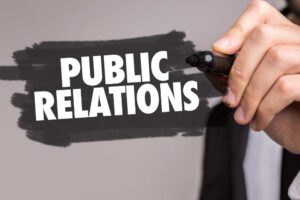When you’re launching a startup, getting your brand noticed can be one of your biggest challenges. The competition is fierce, the budgets are often limited, and you’re likely trying to make your mark in an overcrowded market. But there’s good news: building brand awareness doesn’t have to break the bank. Public Relations can be a powerful tool to get your startup recognized, even with a modest budget.
What is PR for Startups?
Public Relations is the strategic effort to increasing the brand awareness of your brand. For startups, this means gaining exposure through earned media, which can be anything from press coverage in newspapers and magazines to mentions on social media by influencers or industry experts. The goal is to build positive awareness of your brand, its products, and its values.
PR involves reaching out to the media, developing relationships with journalists, pitching stories that connect with your target audience, and leveraging industry events and collaborations to gain visibility. The focus is on creating authentic and trustworthy content that engages the audience without the high costs associated with advertising.
PR vs. Advertising: What’s the Difference?
To understand how PR can fit into your brand marketing strategy, it’s important to compare it to advertising, as the two often serve similar goals—raising awareness and building a positive brand image—but in very different ways.
Cost: PR is More Budget-Friendly
One of the most obvious differences between PR and advertising is the cost. Advertising requires a financial commitment to place ads across various media platforms, including print, digital, TV, and radio. The cost of advertising can add up quickly, especially if you’re targeting a wide audience or using expensive platforms.
On the other hand, PR relies on earned media rather than paid media. While a PR is an investment, PR activities themselves don’t require you to pay for media placements. With strategic pitching, you can often get your startup featured in popular publications, websites, or TV shows without additional expense.
For startups on a tight budget, PR is an ideal way to generate buzz without the financial strain of paying for advertising. Plus, the results—especially if you manage to get featured in a major media outlet—can be much more impactful and long-lasting than an ad that runs for a short period of time.
Control: Advertising Offers Full Control, PR Relies on Trust
With advertising, you have full control over the message, creative direction, timing, and placement of your campaign. If you’re running a paid ad on social media or a search engine, you can specify exactly when and where your message will appear, and what it will look like.
PR, however, works differently. You don’t have complete control over whether a journalist will pick up your story, how they’ll write about it, or when it will be published. Yes, this may be concerning at first, however earned media coverage typically carries more weight with the audience because it comes from a third party—a journalist, blogger, or influencer—who is seen as a trusted source. As a result, PR can help build credibility and trust in your brand in ways that advertising won’t necessarily be able match.
Audience Engagement: PR Builds Long-Term Relationships, Advertising Can Be Short-Term
Another difference is in how PR and advertising engage the audience. Advertising is transactional—you’re essentially asking your audience to act immediately, whether it’s making a purchase, signing up for a newsletter, or downloading an app.
PR, however, is about building relationships. A well-placed story in a reputable publication can generate buzz and spark conversation, even if the audience doesn’t immediately buy something. The goal of PR is to keep your brand top-of-mind over time and create a sense of familiarity and trust.
For startups, this long-term brand-building strategy is essential. It can take time to turn a customer into a loyal supporter, and PR provides the credibility and authority to get people talking about your brand and products over the long haul.
Targeting: Advertising Targets a Specific Audience, PR Targets a Broader One
With advertising, you can precisely target your ideal customers. Whether you’re targeting people based on demographics, location, or behaviours, advertising allows you to be laser-focused on your approach.
In PR, targeting is a little more fluid. While you can pitch specific outlets or journalists who cater to your target audience, you’re essentially relying on the media’s editorial calendar. That means PR can sometimes reach a broader audience than advertising. For example, getting featured in an industry publication may expose your brand to people who are interested in your product category, but not necessarily part of your immediate target market. This broader exposure can be beneficial, especially for startups that want to grow beyond their niche.
Also Read – Are You Wasting Money on Ads? Why PR Might Be a Better Investment
When Should Startups Invest in Advertising vs. PR?
Both PR and advertising play important roles in building brand awareness and driving business success. So, knowing where to invest is very important at the very start of your campaign:
Invest in PR When:
- You’re Just Starting Out and Have Limited Resources – PR is an excellent choice for startups that are trying to build brand awareness without spending a lot of money. By focusing on earned media, you can create buzz, get press coverage, and leverage word-of-mouth marketing—all of which help get your brand noticed in a cost-effective way.
- You Want to Build Trust and Credibility – When you’re a startup, building credibility is crucial. If your brand is seen in a reputable outlet or by a respected influencer, it can help create a sense of legitimacy. This type of earned media helps foster trust with your audience in a way that paid ads can’t always replicate.
- You’re Focused on Long-Term Brand Growth – PR can help you build a solid foundation for long-term growth. While the results of PR efforts may not be immediate, over time, consistent media coverage and relationship-building can lead to increased recognition and more loyal customers.
- You’re Trying to Stand Out in a Crowded Market – PR allows you to highlight the unique aspects of your startup, whether it’s a groundbreaking product, a strong company culture, or a socially conscious mission. This can help you stand out in a crowded market without needing to spend big on advertising.
Check Out – How PR Helps in Building Brand?
Invest in Advertising When:
- You Need Immediate Visibility – While PR can take time to yield results, advertising can offer quick visibility. If you need to get your product or service in front of a large audience right away, advertising might be the better option. It’s ideal for limited-time offers, product launches, or seasonal campaigns.
- You Want to Drive Direct Conversions – Advertising is a great tool for direct-response marketing. If you want to drive immediate actions, such as sales, sign-ups, or event registrations, ads can give you the push you need.
- You Have a Larger Budget to Work With – Advertising is an ongoing investment. If your startup has the financial resources to sustain paid campaigns over time, it can complement your PR efforts and help solidify your brand’s presence across various channels.
- You Want to Experiment with Different Audiences and Platforms – With advertising, you can test different strategies, messages, and platforms to see what resonates best with your target audience. This flexibility allows you to optimize your approach and allocate your budget efficiently.
PR and Advertising Can Work Together
When building brand awareness for your startup on a budget, PR offers a cost-effective way to generate buzz and credibility. By focusing on earned media, you can build long-term relationships and establish your brand as an industry authority.
At the same time, advertising plays an important role in driving immediate visibility and conversions. The key is to understand how each tool fits into your broader brand marketing strategy and when to use each based on your goals and resources.
For startups looking to maximize impact without draining their budget, a well-executed PR strategy combined with targeted advertising efforts can work wonders. By leveraging both, you can build a strong foundation for your brand’s success—starting with credibility and trust and moving toward visibility and growth.







